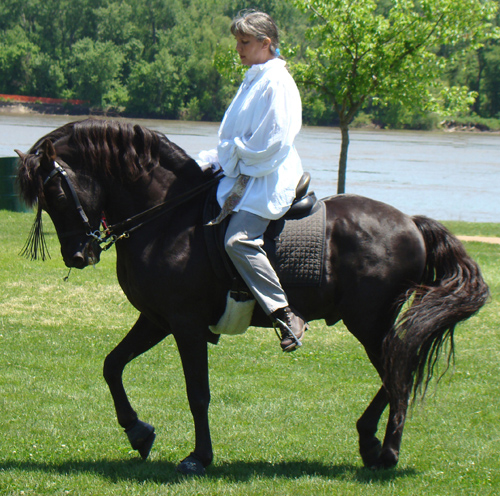All true Lippitt Morgan horses today share a common ancestor. They are descended from Figure, a bay stallion owned by Justin Morgan of Vermont. Figure was foaled in the late 1700s and used as a stud horse until his death in 1821. Figure's unique body was compact, muscular, and stylish. These traits are still present in his descendants.
Initially, this horse was simply referred to as the Morgan. In the early 1900s, the industrial age made working breeds like the Morgan obsolete. Many breeds actually died out during this time simply for lack of interest. This might have been the Morgan's fate if horse owners hadn't decided to use this stunning breed for recreational activities such as harness racing, dressage, and pleasure riding. Unfortunately, this meant that owners desired a horse with more speed and refinement, so the original traits of Figure were being washed out.
Preservation efforts began in earnest. Fullerton Phillips of Pennsylvania was determined to breed his own Morgan horses and collected quite a herd, but a storm stuck and killed many of his prized equines. Five years later, in 1927, Phillips died and his remaining horses were separated for sale.
Lucky for the Morgan, Phillips wasn't the only man who took an interest in this unique breed. Robert Lippitt Knight bought several of Phillips horses with the hope of truly restoring the Morgan breed. He basically succeeded, but when he passed away in 1962, his horses were slated to be sold at auction. Because many horse enthusiasts knew of Knight's work, most of the horses were bought by those who wanted to continue the breed.
In 1971, less than a decade after his death, those still working to preserve the breed added 'Lippitt' to the name, creating the Lippitt Morgan to recognize Knight's contribution to the breed's survival. Since then, there have been no outcrosses, so most Lippitt Morgans exhibit many of the traits so prized in Figure back in the 1700s.
Standing between 14.1 and 15.1 hands high, the Lippitt Morgan has a short head, medium-length neck, and an impressive, pronounced chest. The back is quite short when compared to other breeds, but the croup is relatively long. The legs of this interesting breed are long in the thighs, gaskins, and forearms, but short in the cannon bones. Though the Lippitt Morgan comes in many dark colors, bay, brown, black, and chestnut are most common.
Though once a popular workhorse, today the Lippitt Morgan is seen in a variety of disciplines. They are most common in driving competitions, but they can also be seen under the saddle. For more information, visit the Lippitt Morgan Breeders Association.

No comments:
Post a Comment